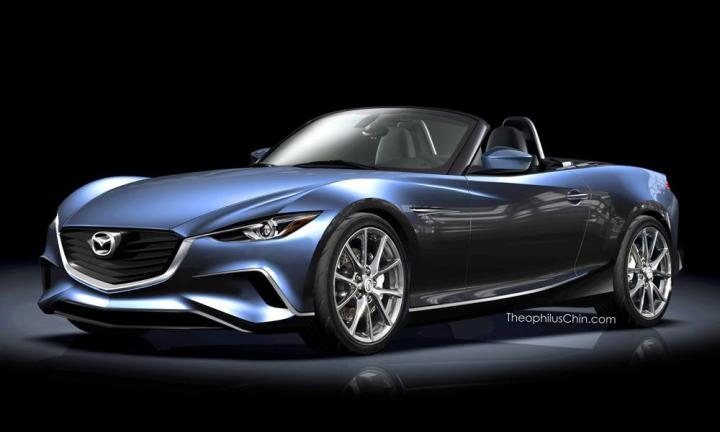
The Motor Report is detailing statements from Mazda Australia Managing Director Martin Benders, who reveals that the 2016 MX-5 “will look nothing like” its predecessor.
Benders hinted the new convertible will ditch the ‘family face’ of previous generations in favor of Mazda’s sleek, aggressively-coiled ‘Kodo’ design philosophy.
Kodo sees a car as an emotive, living creature that can connect with its driver. The swooping “Soul of Motion” principle underpins the Mazda3, Mazda6, and CX-5, and will heavily influence the upcoming Mazda2 and RX-7 successor.
When asked if the upcoming MX-5 would bear resemblance to the Kodo designs of the aforementioned models, he replied, “I would say it’s more of an evolved version of that.”
And so the Miata graduates from cute sports car to striking track presence. Will it lose the basic appeal of previous iterations?
Doubtful, at least if you take Mazda at its word. The Japanese carmaker has already confirmed a lightweight, nimble SKYACTIV-CHASSIS that will save the Miata 220 pounds over its antecedent. The new front-engine, rear-wheel-drive setup will also lower the MX-5’s center of gravity.
Engine choices will be mainly carryovers from the current generation, which includes a 126-horsepower, 1.8-liter four and a 167–hp, 2.0-liter mill. There are reports of a 99-horsepower, 1.5-liter SKYACTIV-G unit as well, but that engine probably won’t make it to U.S.
It may have been around for 25 years, but Mazda is clearly still committed to keeping the MX-5 relevant in a quickly growing market. Watch out, Toyota GT86, your forefather still has some kick left.
The new roadster is scheduled for a public debut on September 4th.
(Photo credit: TheOphilusChin)


